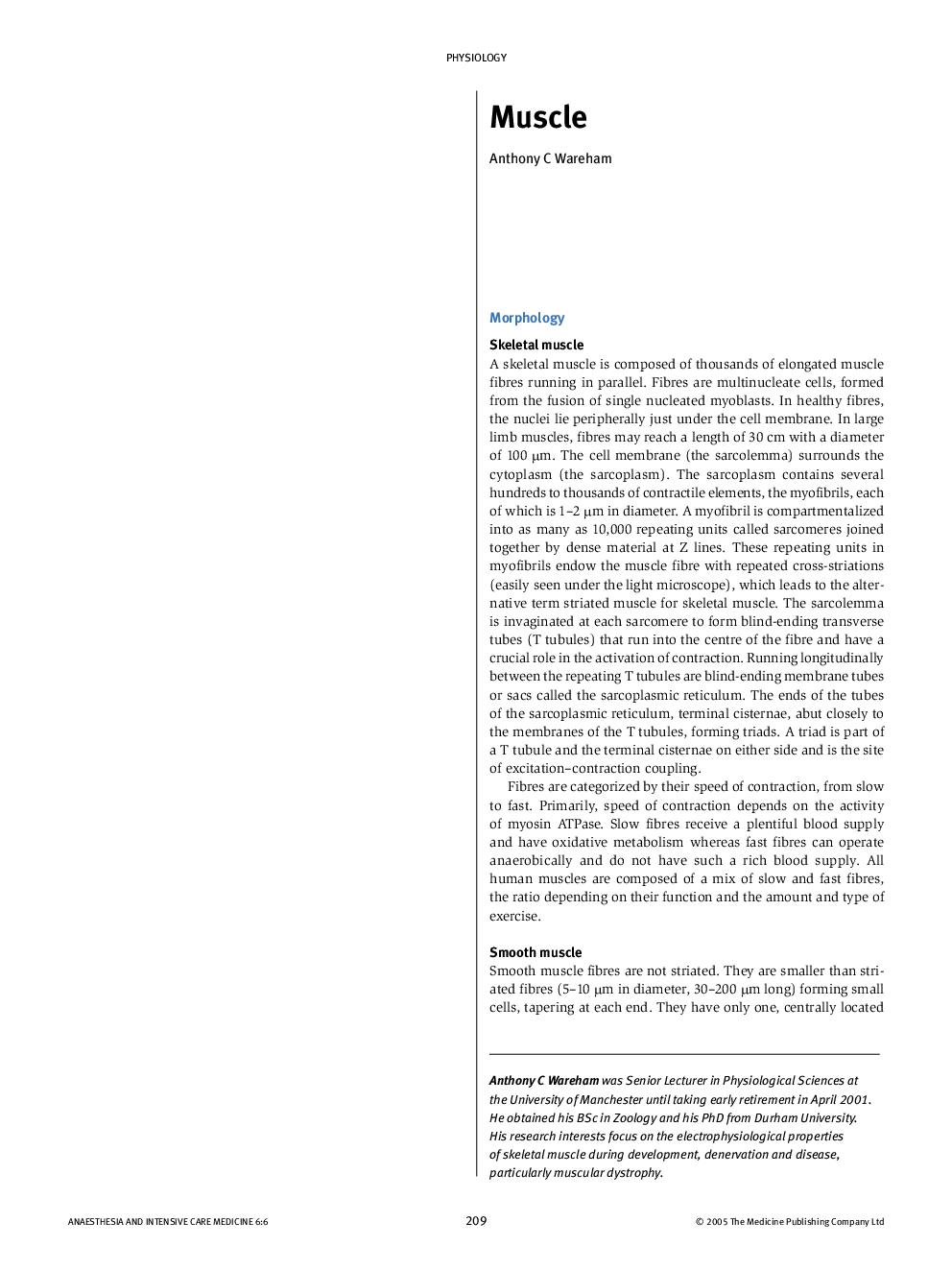| Article ID | Journal | Published Year | Pages | File Type |
|---|---|---|---|---|
| 9089885 | Anaesthesia & Intensive Care Medicine | 2005 | 4 Pages |
Abstract
Skeletal muscle fibres are long multinucleate cells containing up to 10,000 repeating subunits, sarcomeres, throughout which run fine membrane sacs, the sarcoplasmic reticulum. Smooth muscle cells are small, 30-200 micrometres long and do not have ordered sarcomeres. An action potential is carried into the centre of a skeletal muscle fibre along thousands of T tubules, invaginations of the cell membrane. This depolarization of the T tubules activates two types of calcium channel and releases calcium from within the sarcoplasmic reticulum. It is the subsequent effect of calcium that couples the electrical signal of the action potential to muscle contraction. T tubules and sarcoplasmic reticulum are largely absent from smooth muscle and here calcium influxes mainly from the cell surface. Contractile proteins, thick myosin and thin actin filaments are arranged with other large regulating proteins in an ordered and overlapping way within sarcomeres. Muscle contraction, resulting from the sliding of actin filaments past myosin filaments, is produced, in the presence of ATP and calcium, by repeated formation of cross bridges between the ATPase head of myosin molecules and successive myosin-binding sites on actin filaments. Contraction, triggered by the release of calcium, ceases as the calcium is pumped back into the sarcoplasmic reticulum. In skeletal muscle, calcium binds to troponin, which activates tropomyosin, thus exposing myosin-binding sites on the thin filament. In smooth muscle, the effect of calcium is mediated by calmodulin, which activates myosin light chain kinase and myosin phosphorylation before myosin can bind to actin, making contraction a much slower process.
Keywords
Related Topics
Health Sciences
Medicine and Dentistry
Anesthesiology and Pain Medicine
Authors
Anthony C Wareham,
